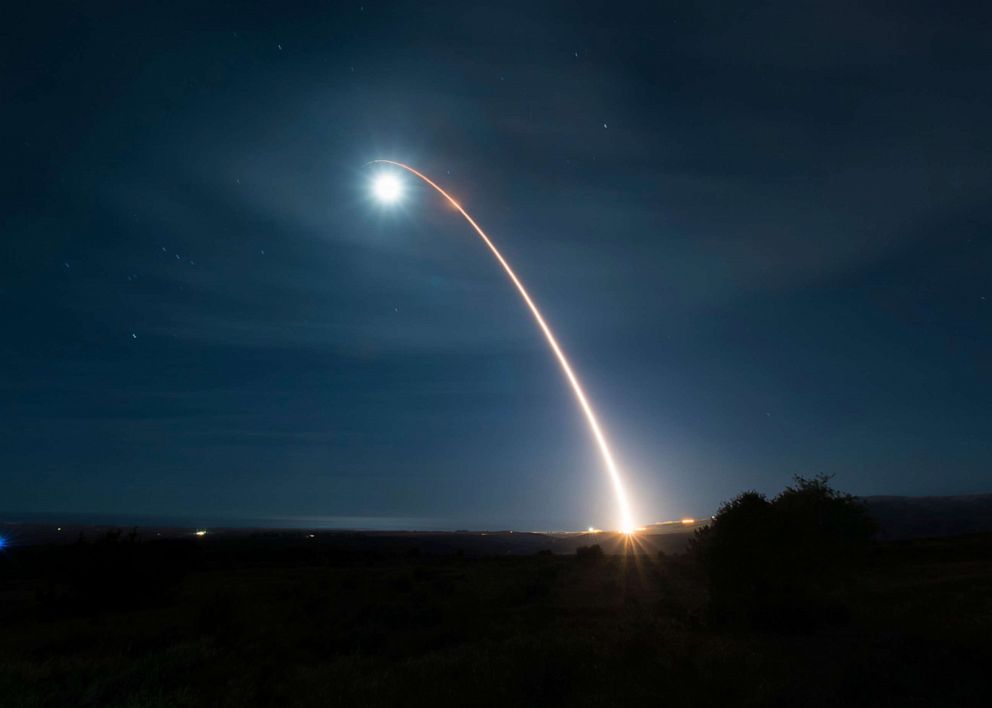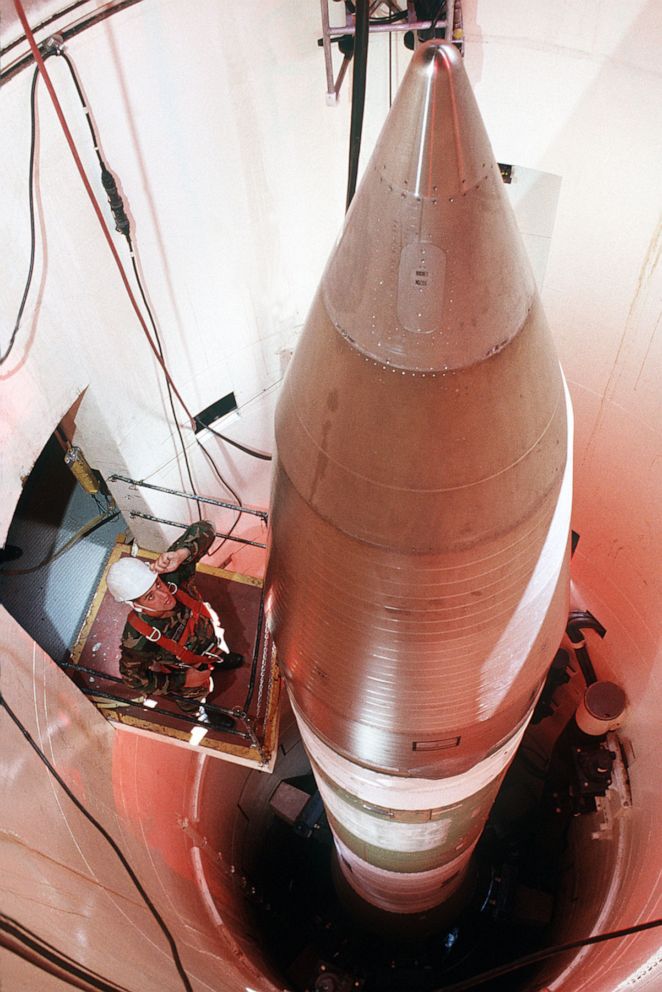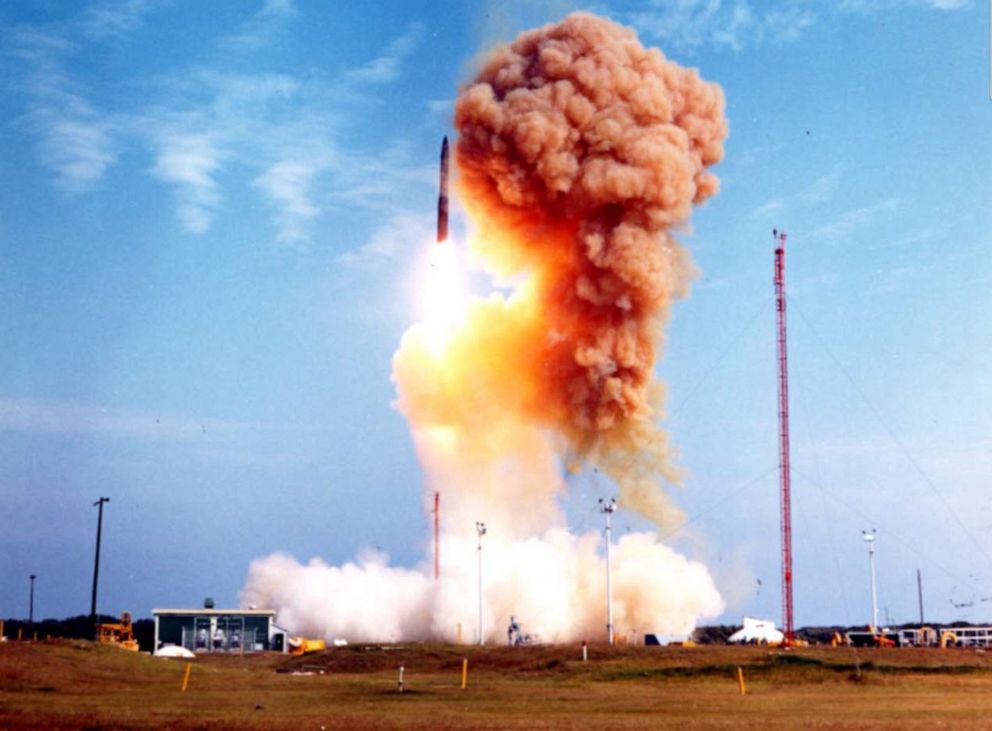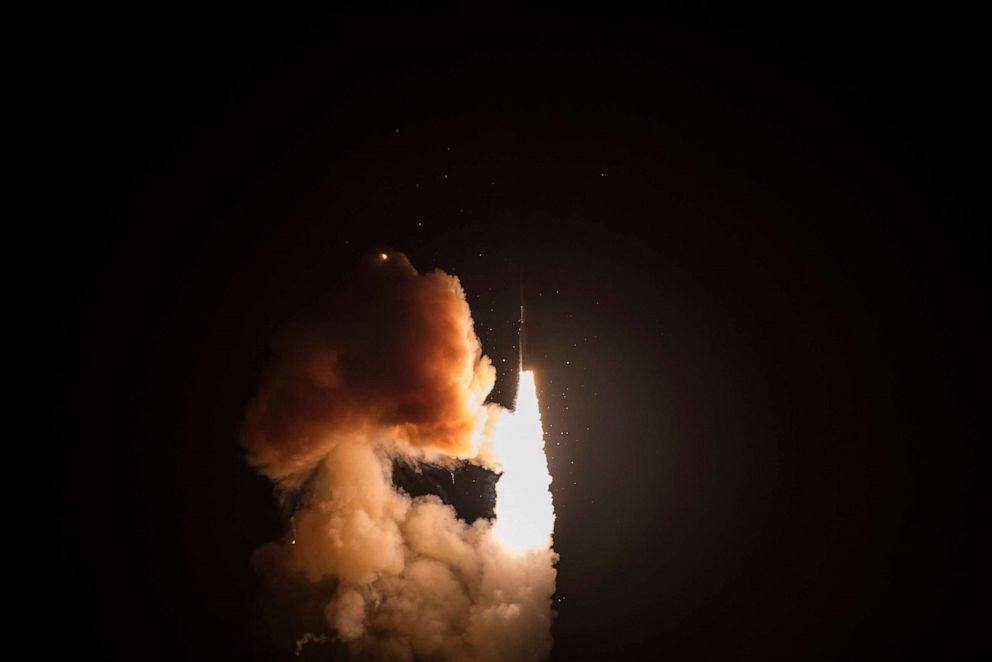Minuteman III ICBM marks 50 years of service this week
The Intercontinental Ballistic Missile was designed to be in use for 10 years.
It is a milestone that likely would have seemed unimaginable to the engineers that designed the Air Force's Minuteman III missile, but this week marks the 50th year of service for the intercontinental ballistic missile.
Originally envisioned to be operational for 10 years, the missile could remain in service for at least another decade until it is eventually replaced by the next generation of ICBMs.
The 400 Minuteman III's currently in service are the ground-based missile component of the U.S. military's nuclear triad that makes up the United State's nuclear deterrent. The nuclear triad also includes submarine-launched ICBMs and nuclear weapons delivered by long-range strategic bombers.
When the missiles first went into service on Aug. 19, 1970, they served as a nuclear deterrent to the Soviet Union. In the decades since the end of the Cold War they have continued to play that role while Russia and China have modernized their own ICBM fleets.

"The missile was really only meant to be in the ground for 10 years, and so here we are at 50," Gen. Tim Ray, the commander of Air Force Global Strike Command, told ABC News.
Over the years, multiple maintenance programs have extended the missile's service life far longer than could have been anticipated.
"There's a lot of great engineering that went into the missile, but not an extra 40 years worth," said Ray of a missile whose basic technology was designed in the 1960s.

Ray praised the efforts of missile operators, maintainers and engineers who have enabled the life extensions of the last five decades.
But those teams now face new challenges as spare parts needed to maintain the missiles have been harder to find as some of the original manufacturers of the Cold War-era missile have gone out of business.
"They've been tremendous 24-7, 365 for 50 years, and they've never faltered," said Ray.
Reflecting on the success of the maintenance updates, the Air Force occasionally conducts Minuteman test launches from Vandenberg Air Force Base in California that strike remote targets at U.S. military ranges in the Pacific Ocean.
"This is a great story," said Ray. "But just because it's a great story doesn't mean we have to try to recreate it for another 50 years. It's absolutely time to modernize a system."

The Air Force is already planning to replace the Minuteman with the next generation of ICBMs known as the Ground-Based Strategic Deterrent (GBSD), but the first of those missiles are not expected to be operational until the 2030s.
Ray said the new missile will be cheaper to maintain because it will be designed to include modular technology and systems that can be updated over time as needed, instead of having to find specific parts for the Minuteman.
Ray believes those changes and updated technologies will add up to billions in cost savings in the future.

When those new missiles arrive a decade from now, they will go into the same underground missile silos that have housed Minuteman III's for the last 50 years.
Those silos are spread out over tens of thousands of acres in North Dakota, Montana, Wyoming, Colorado, and Wyoming.
Junior Air Force officers known as missileers pull continuous shifts at underground "launch control centers" that control the missile operations of multiple silos.
The launch control centers are protected above ground by Air Force security teams that are also on continuous duty.

But even these Air Force teams have had to a different kind of threat, the coronavirus pandemic. Regular testing has been implemented and schedules have been adjusted to reduce the physical contact for missileers, which Ray said had improved the quality of life for missile teams and their maintainers.
But Ray said the isolated nature of operating the missile fleet has worked to their advantage during the pandemic because "nothing says social distancing like 26,000 acres around you, it is a big, big help."



